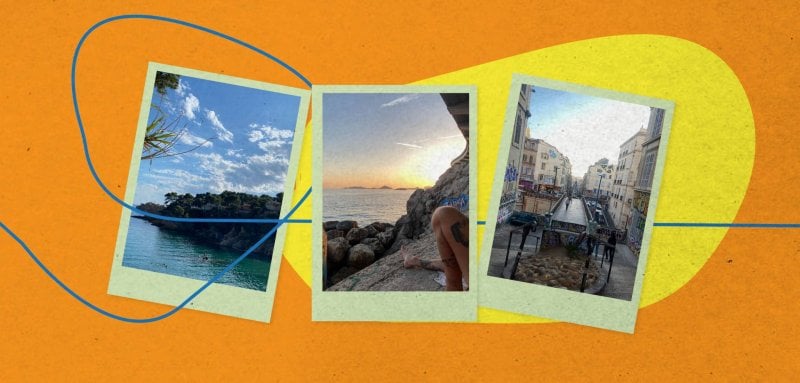With a population of approximately 68 million, France has one of the largest populations in Europe. Among its inhabitants, over 7 million are of Arab descent. The South of France has a longstanding relationship with Arab communities, dating back centuries.
According to the 2022 population census in France, approximately 40% of children aged between 0 and 4 are either immigrants or have immigrant backgrounds.
During the medieval era, the South of France had extensive connections with the Islamic world thanks to its close proximity to North Africa and the Mediterranean. This allowed for trade, cultural interchange and migration between the two regions. Diplomacy, warfare, and commerce all played important roles in these interactions. The area was once a part of Al-Andalus, a vast territory that included present-day Spain and portions of southern France. Arab traders, academics and envoys frequented the region, influencing its cultural, linguistic, and architectural landscape.
More recently, during the colonial era, the relationship between France and North Africa greatly affected the Arab population in Southern France. With French colonial control over Algeria, Morocco, and Tunisia, there was a significant increase in the movement of workers from these regions to France, particularly after World War II. This led to the establishment of Arab communities in cities like Marseille, eventually contributing to the diverse cultural landscape of the region. According to the 2022 population census in France, approximately 40% of children aged between 0 and 4 are either immigrants or have immigrant backgrounds.
While traveling in the southern region of France, I became particularly fascinated by the noticeable variations in the Arab population as one travels along the coast.
The winding streets of Noailles lack clear navigation, occasionally lead to quaint plazas, and frequently branch off into bustling alleyways filled with people. After French, Arabic is Noailles' lingua franca.
From the Avignon Papacy to a "stronghold" of Salafists
In southeastern France, Avignon earned its nickname as the "Popes' City." It became the seat of the Catholic Church in the 14th century after Pope Clement V moved the papal court there to escape political unrest in Rome. This began the Avignon Papacy, which lasted until 1377 and saw seven popes reside in the city. The Palais des Papes, a Gothic fortress, served as the papal residence and center of administration.
Currently, Avignon serves as a key point for individuals with Arab heritage. In January 2016, a probe was carried out in the Reine-Jeanne district of Avignon, revealing a notable population of Salafist Muslims. This has led the area to be considered more a "stronghold of Salafists" rather than its former title of "City of the Popes."
The inquiry uncovered a radical Islamic group, in which imams played a significant role in the process of radicalization. The region is home to ten mosques, including two of Turkish origin, one Algerian, and seven Salafist mosques, with imams who have mainly been trained in Morocco.
Marseille is home to a large Arab population, making up a considerable portion of the city's residents. The oldest city in France and one of the oldest in Europe, Marseille is also the third largest city in the country.
While exploring this ancient city, one cannot help but observe the hints of Arab influence, with its street markets, stores selling North African goods, and bustling yet charming chaos that evokes feelings of nostalgia for North Africa.
Exploring Noailles, an Arab concentrated area of Marseille, is reminiscent of traveling through the Mediterranean and beyond. The winding streets lack clear navigation, occasionally lead to quaint plazas, and frequently branch off into bustling alleyways filled with people. After French, Arabic is Noailles' lingua franca.
The Arab community in downtown Marseille is significant and diverse. This community has transformed the city's landscape.
The Open Society Foundations report, "Muslims in Marseille," highlights the city's deep divisions and the vast inequities faced by Muslim residents, made up of a majority of Arabs from North African nations, in education, employment, and housing. The report suggests that the educational environment in Marseille's north district schools stands in stark contrast with that of the city's south districts, and contributes to the underachievement generally recorded in the city's heavily Muslim/Arab north district schools. Residential segregation is a key feature of Marseille, with the city split between urban renewal areas in the North, where there is a high Muslim and socio-economically deprived population, and well-to-do southern districts with a much lower Muslim and migrant population.
An Open Society Foundations report suggests that the quality of education at Marseille's predominantly-Muslim north district schools stands in stark contrast with that of the city's south district's schools, and contributes to the underachievement generally recorded in the city's heavily Muslim or Arab north district schools.
Despite these challenges, the Arab community has made significant contributions to Marseille's cultural scene, particularly musically, with the city being a breeding ground for emerging French hip-hop talent.
Paradoxically, the South of France has some of the most expensive and nicest beaches in the world, only affordable by a few. The other side is often ignored.
When heading East towards Italy, you will reach the breathtaking coastal town of Nice. This town is home to a large population from North Africa, particularly from Tunisia, living alongside non-Muslim French citizens, in secular middle-class neighborhoods.
Despite this, government statistics show Nice to have the second highest number of extreme Muslims, closely behind the unstable Parisian suburb of Seine-Saint-Denis. In fact, when considering its relatively small size, Nice, with just over 343,000 residents, is the most radicalized area in France.
The North African population residing in Nice encounters many difficulties, such as prejudice and exclusion, leading to a feeling of detachment and separation among certain youths. As a result of gentrification in specific neighborhoods, some Muslim groups have been pushed to live in isolated suburbs. This trend further fuels religious divides and can potentially foster radicalization.
A short drive away, the glitz and the glam
The French Riviera is also renowned for its luxurious and glamorous atmosphere, and this reputation is warranted. Each summer, wealthy Arabs from the Gulf flock to the South of France, specifically to Cannes and Monaco. These individuals, sometimes referred to as "playboys," arrive with their extravagant supercars, custom-made versions of well-known models from top luxury car brands such as Ferrari, Lamborghini, and Bentley.
The French business world is greatly impacted by a powerful group of billionaires with Arab heritage. As reported by Forbes Middle East, the total net worth of the top five richest French billionaires with Arab roots is $37.1 billion. This group includes noteworthy individuals like Joseph Safra, the wealthiest banker in the world, whose lineage traces back to a Lebanese-Syrian family. In fact, all of these billionaires began their journey in southern French cities. The Saadé family, which boasts three French billionaires with Arab heritage, started their business empire in Marseille. Their father, Jacques Rodolphe Saadé, relocated to France during the Lebanese Civil War.
To summarize, the Arab community in France has a long history that can be traced back for centuries. They have had connections with the Islamic world since medieval times and played a significant role during the colonial era. Today, their presence is evident in cities like Marseille, Avignon, and Nice, adding to the cultural diversity. Despite facing difficulties such as economic and religious differences, the Arab population has greatly enriched the region's culture. Furthermore, the South of France's Arab identity is also influenced by the economic impact of affluent Arabs who visit as tourists and hold influential positions in business.
 South of France, image courtesy Laila Zohdy.
South of France, image courtesy Laila Zohdy.
Raseef22 is a not for profit entity. Our focus is on quality journalism. Every contribution to the NasRaseef membership goes directly towards journalism production. We stand independent, not accepting corporate sponsorships, sponsored content or political funding.
Support our mission to keep Raseef22 available to all readers by clicking here!
Interested in writing with us? Check our pitch process here!





